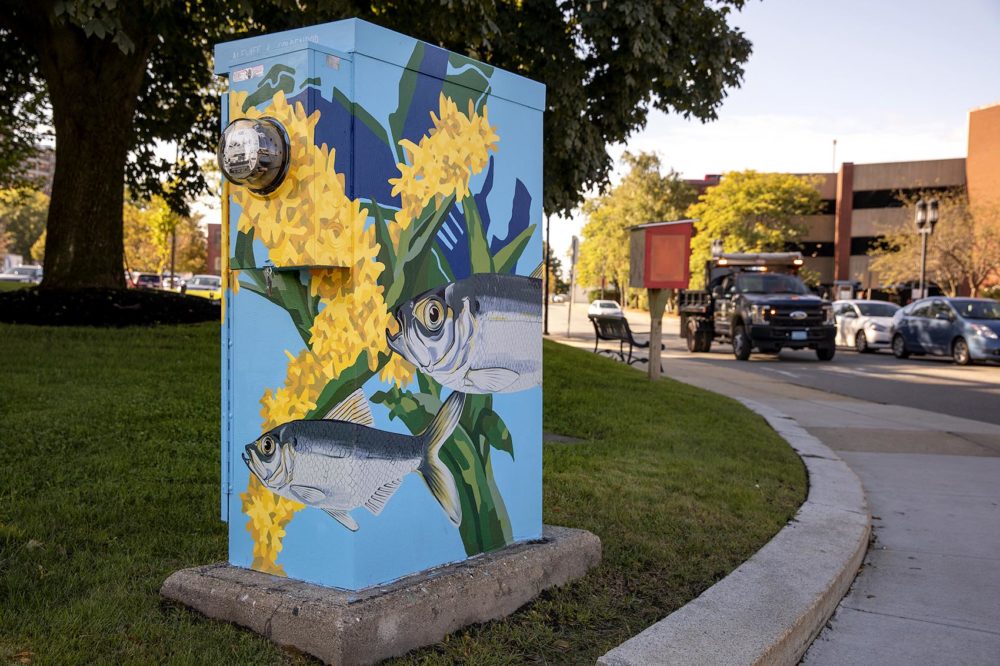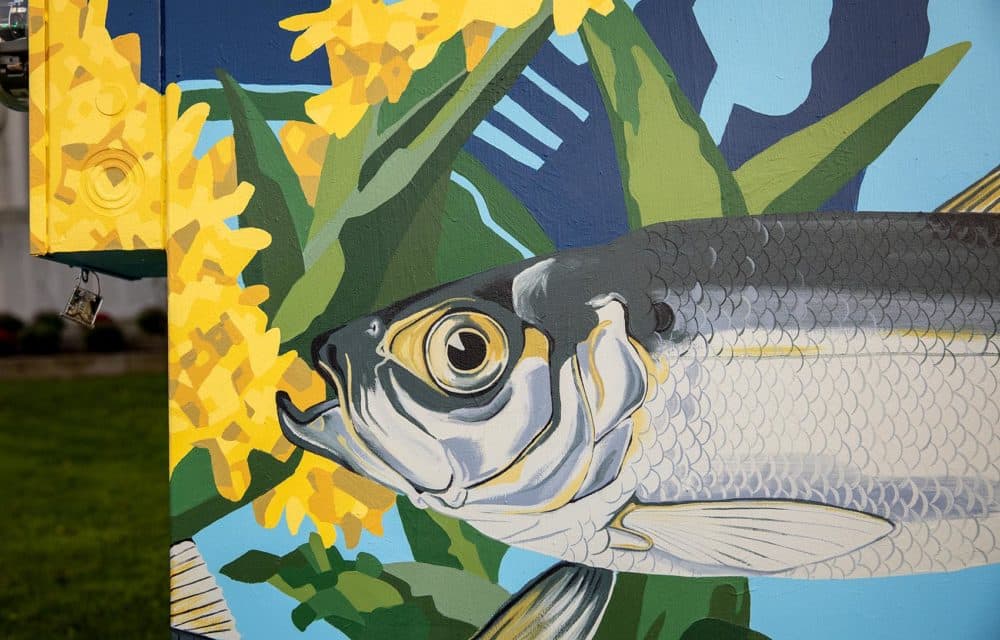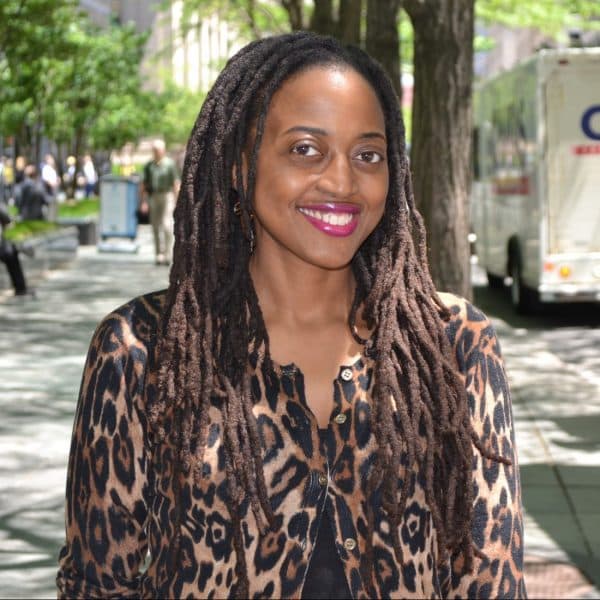Advertisement
Medford's Electrical Boxes Are Now Covered With Plants And Animals Of The Mystic River Watershed
On a recent evening, artist Sophy Tuttle meets me in the parking lot in Medford. It’s not quite dusk, but the ominous gray clouds make it feel much later. Tuttle wants to show me three of her newest mini-murals painted on electrical boxes here before we start our short jaunt to see the other seven. In the grass lining the lot’s edge, an electrical box is covered with a patch of red wild mushrooms. A blue belted kingfisher is set against a rich forest green background.
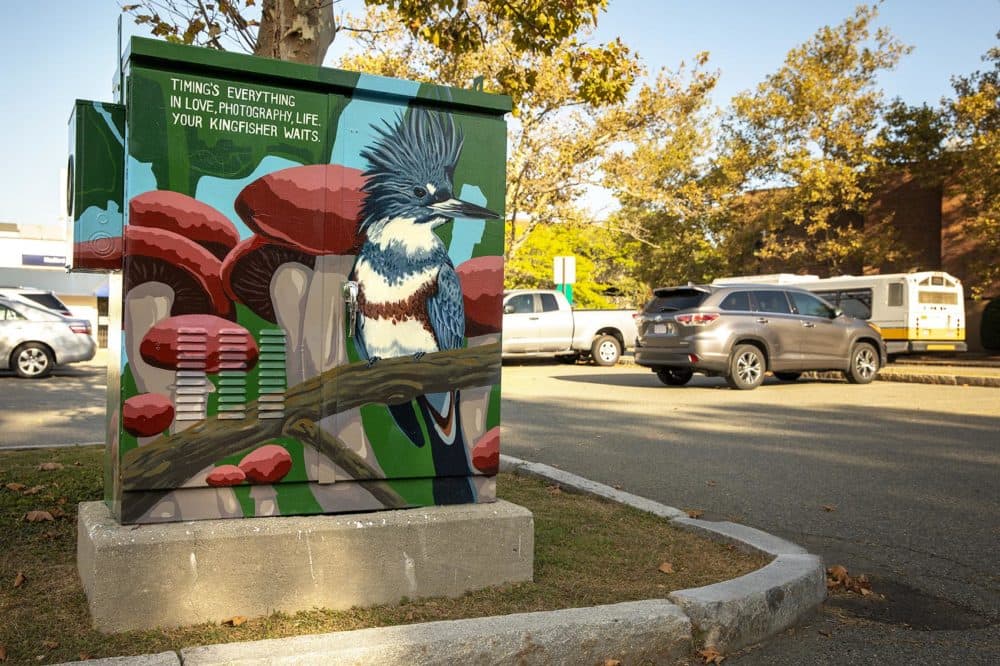
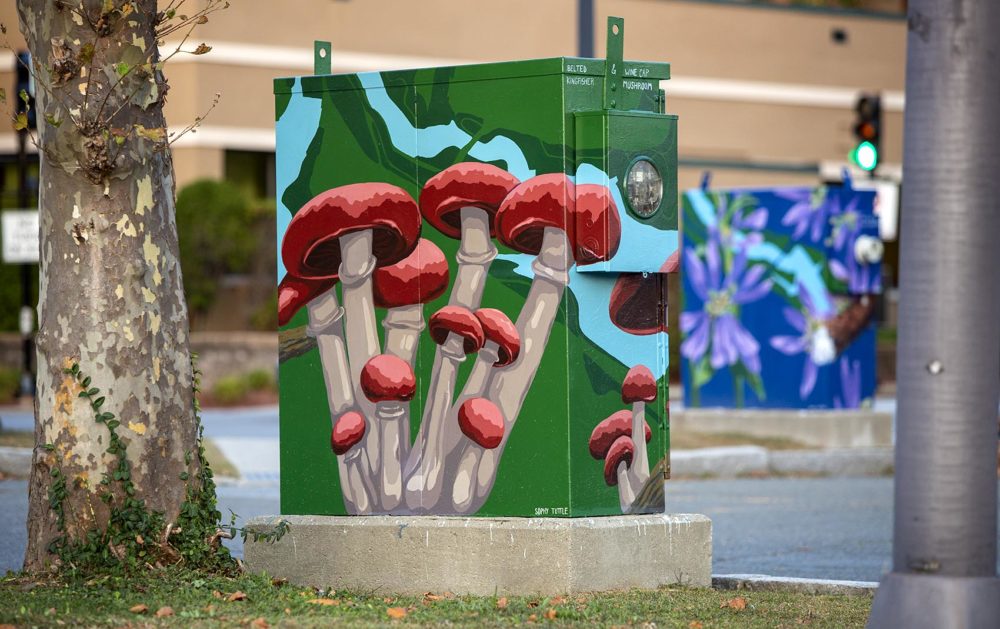
Surrounding Medford Square, the Medford-based artist's latest installation, titled "Electrical Box Landscapes," depicts native and invasive flora and fauna that populate the nearby Mystic River ecosystem. Each painting features a haiku from poet Gary Roberts. One box shows a great horned owl with blue flag iris flowers on an orange background; another illustrates an ornate dragonfly holding onto a branch near yellow oyster mushrooms. There's a monarch butterfly atop milkweed and an endangered New England cottontail rabbit (not the ones we find in our gardens, which are usually eastern cottontails) with dark berries. Her painting of a blue heron and water lily is one of Tuttle’s favorites. This work sits close to the sidewalk’s edge and gets nicked by car doors.
The 33-year-old interdisciplinary artist adeptly infuses pressing issues — such as the environment and the policies that affect it — into her work. Tuttle's work “examines humanity’s collective priorities for the planet” and draws upon Russian Icon paintings and the Mexican mural movement of the 1920s for inspiration. In one of her studio pieces, “Axolotl,” a salamander swims amid fast-food soda cups and harmful plastic bottles. In “Borderlands,” walls at the U.S.-Mexico border prevent the Sonoran Pronghorn from migrating and breeding with its Mexican sister population, further threatening the endangered animal. In her mural work, she tries to “bring nature into spaces [where] we've kind of forgotten about it,” she explains.
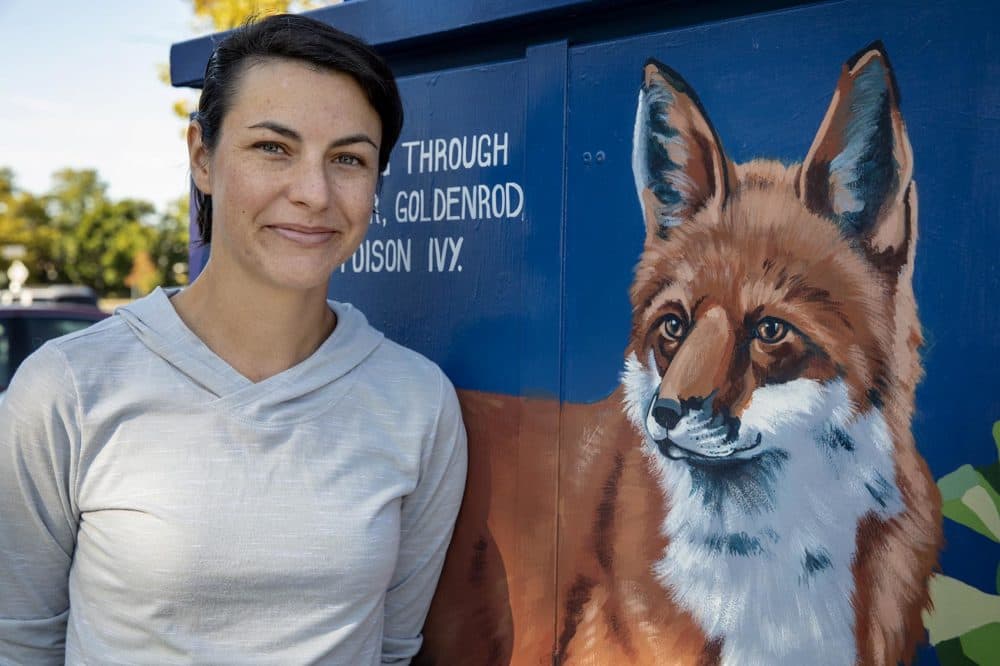
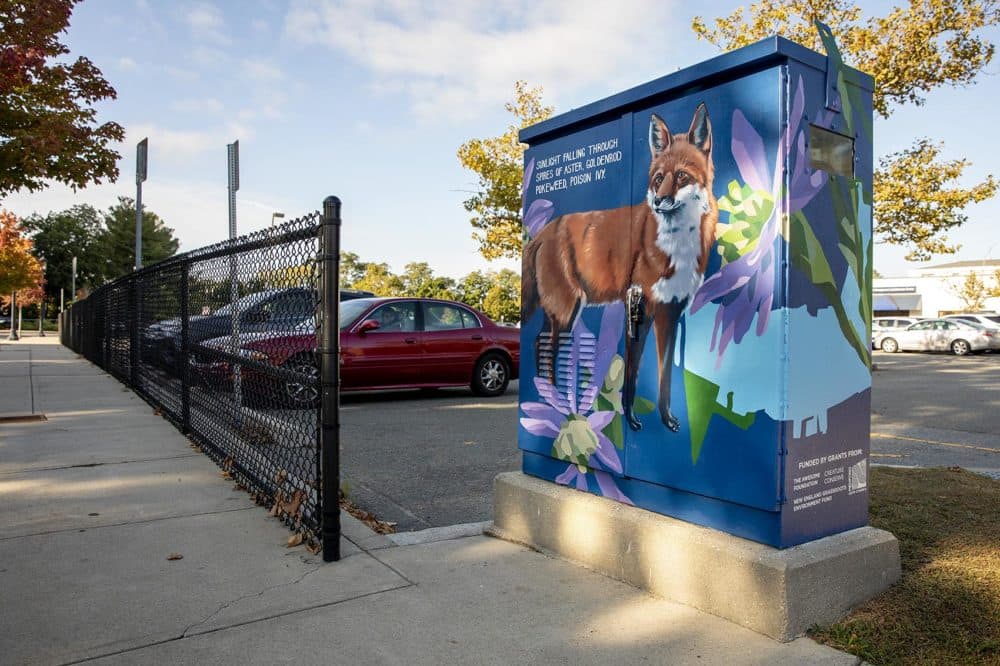
For this series on Medford's electrical boxes, she wanted to draw attention to the Mystic River — a body of water just a block away from the town center that could often be ignored. Tuttle talks about the 60% decline in the world’s populations of mammals, birds, fish, reptiles and amphibians in the last 40 years. She says that “re-imagining future possibilities ... re-imagining our relationship with nature and the way that we treat the world” is paramount for her. As cars whiz by in the bustling center, the paintings invite viewers to linger, even if it’s just for a moment.
There’s no overt climate change messaging or call to action in the imagery. But curious viewers who follow Tuttle on Instagram will see tidbits about the animals and plants that provide more context. For instance, in the caption for a photo of "Green Darner Dragonfly and Oyster Mushrooms," Tuttle writes “Research suggests mushrooms can convert pesticides and herbicides to more innocuous compounds, remove heavy metals from brownfield sites, and break down plastic. They have even been used to remove and recover heavy metals from contaminated water.” In another post, she shares that monarch butterflies depend on milkweed for their survival and urges readers to plant some to bolster their numbers.
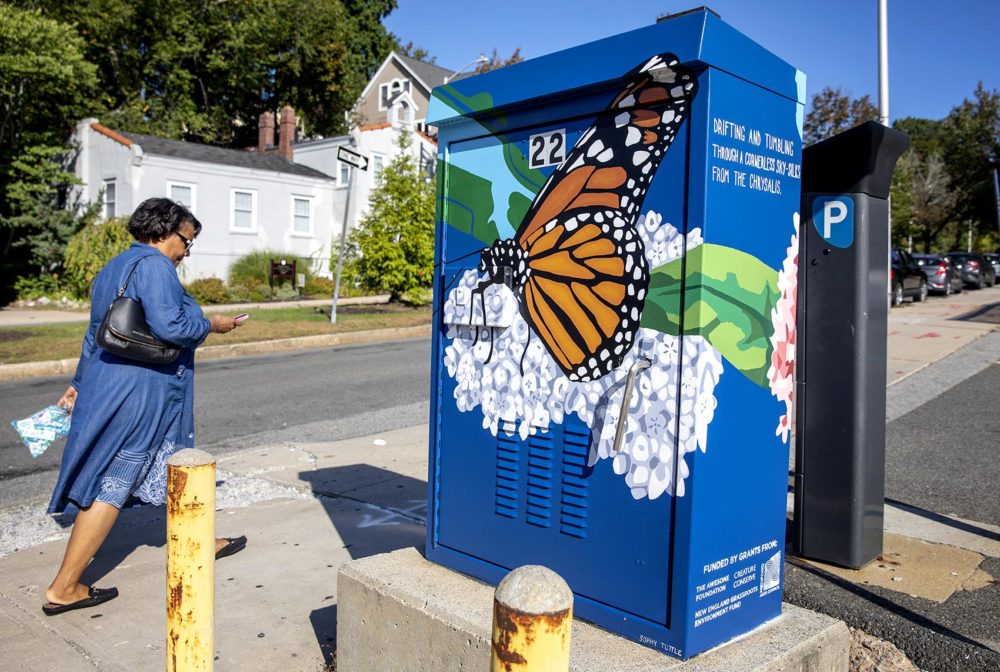
It took nearly three months for Tuttle, with the help of her friend and artist Amanda Hill (who helped with foundational and pattern work for eight of the 10), to paint and varnish all the boxes. The project was funded by The Medford Arts Council, Creature Conserve and The Awesome Foundation. Before Tuttle put paint to brush, she worked with the Mystic River Watershed Association to identify local urban wildlife. Then, the community got to weigh in on what they’d like to see on the boxes via an online survey. Next, Tuttle set out to determine which boxes could be painted. “They didn't have a map of the boxes when I started. So, I had to come and do a walk and put a dot where every single box was and figure out who owned them,” Tuttle tells me. Some were owned by the city, others the state, and a few were privately owned.
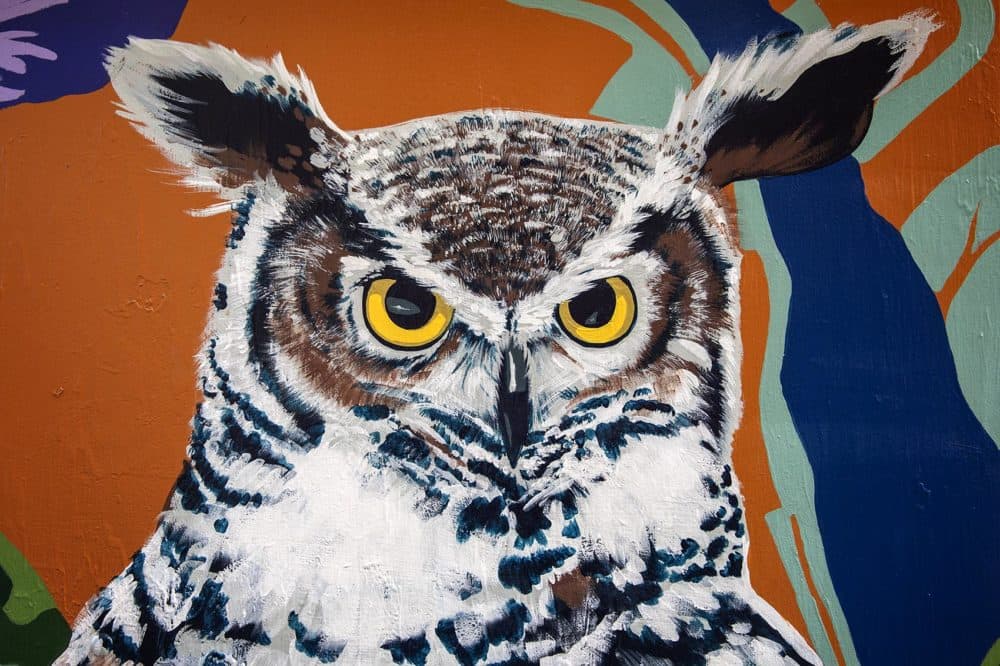

For those who encounter the installation, Medford Arts Council co-chair Danielle Moriarty hopes it “kind of disrupts their everyday walk and meandering through Medford Center [and] brightens up their day.” Perhaps it will “get people to stop and really think about their environment in a larger sense.”
Dr. Lucy Spelman, founder of the nonprofit Creature Conserve that brings together artists and scientists and helped fund this project, says it's vital to have artists leading the conversation on the conservation movement and climate change.
“Scientists telling us we have these problems, you have to do this differently ... feels too much like rules," she says. "Our culture has to lead us to change.”
As for Tuttle, she hopes people who come across the painted electrical boxes will gain "an awareness of the nature around us" — and ideally, a deeper appreciation and respect for our local ecosystem.
